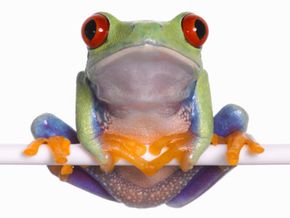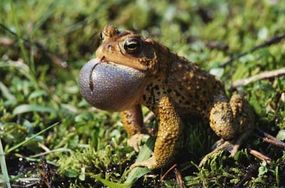Whether it's a bright blue poison dart frog or a brown, warty toad, a frog's survival is all about water. Most frogs begin their lives as jelly-like eggs that need moisture to develop. The eggs hatch into aquatic tadpoles, which breathe through gills. As the tadpoles grow, they develop lungs and gain the ability to breathe air.
But frogs' need for water doesn't dry up once they're on land. Frogs get virtually all of their water and part of their oxygen through their skin, and this process only works if their skin stays moist. If a frog's skin dries out, it can't get enough oxygen or get rid of enough carbon dioxide, and it dies.
Advertisement
So it should come as no surprise that frogs have developed some interesting adaptations to cope with their lifelong need for water. For example, gastric brooding frogs, which are now extinct, swallowed their eggs. They stopped eating and digesting food while their young developed in their stomachs instead of in water. The baby frogs then exited through their parent's mouth. Strawberry poison dart frogs, which live in Central America and Puerto Rico, lay their eggs on land, and males keep them moist with urine. Once the eggs hatch, the mother carries each tadpole on her back to its own tiny pool of water that has collected between the stem and leaves of a plant. While the tadpoles grow, their mother feeds them her own eggs.
But frogs' adaptations aren't all about water or reproduction. They've lived on Earth for about 200 million years, and in that time they've developed everything from deadly toxins to the ability to survive being frozen. You'll learn about these and other adaptations in this article. We'll start with a look at frogs' appearance and behavior, including why toads are frogs, but not all frogs are toads and why frogs molt but don't leave the skin they shed behind.














